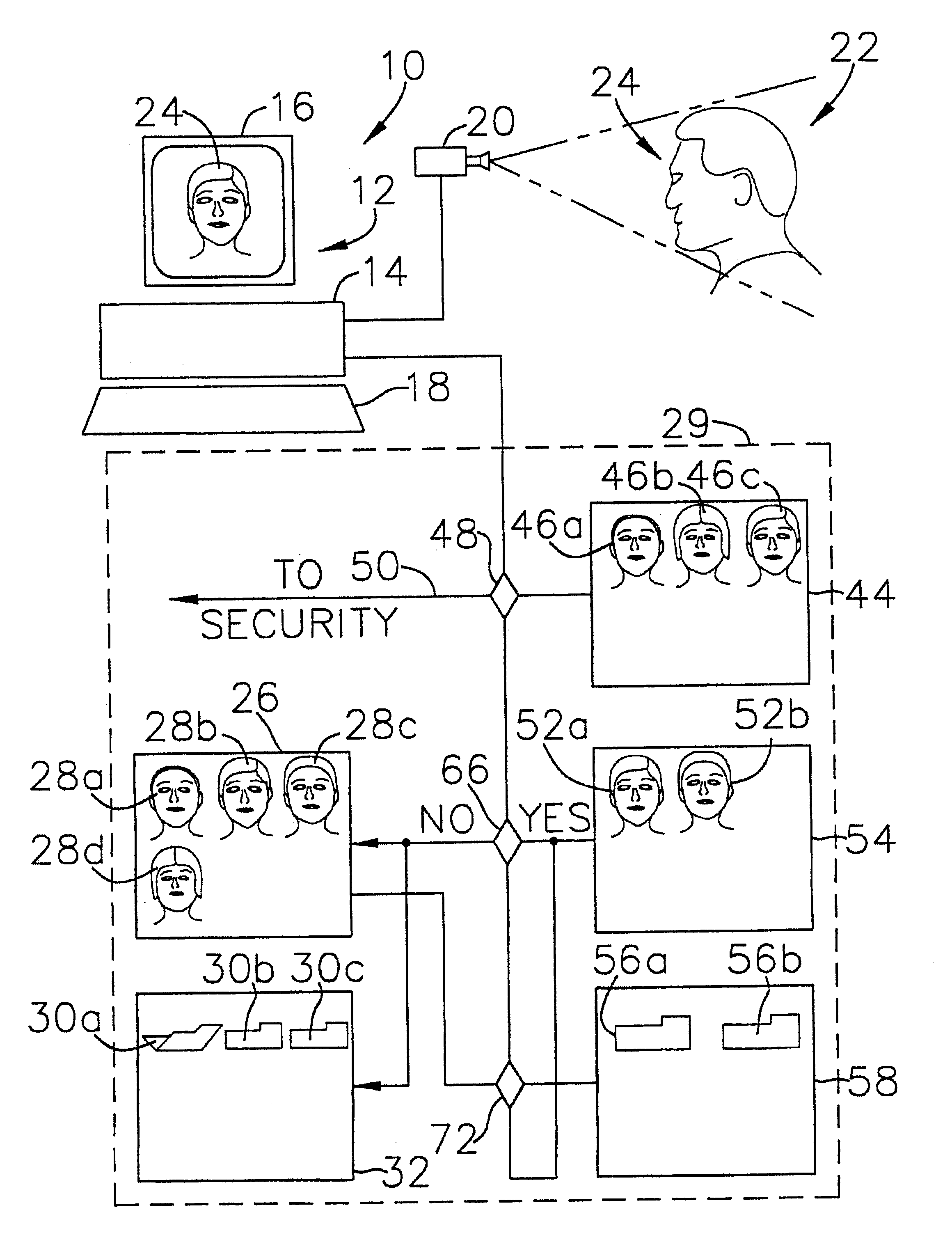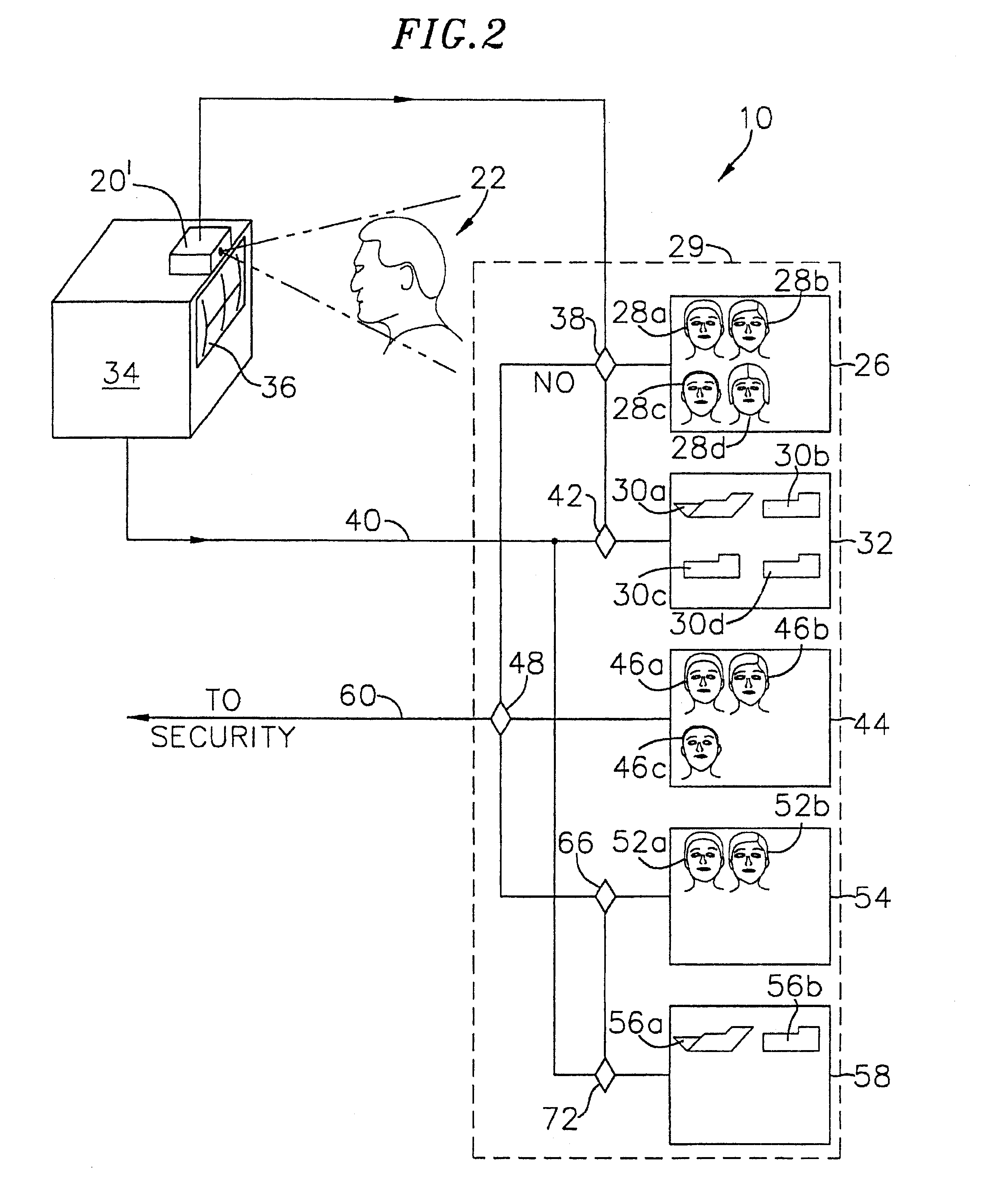Passive biometric customer identification and tracking system
a customer identification and tracking system technology, applied in the field of customer tracking system, can solve the problem that the business cannot be sufficiently interesting to track, and achieve the effect of simplifying the search techniqu
- Summary
- Abstract
- Description
- Claims
- Application Information
AI Technical Summary
Benefits of technology
Problems solved by technology
Method used
Image
Examples
Embodiment Construction
The basic operation of this embodiment of the invention is best seen in FIG. 4, which is a flow chart of the system. In the tracking system of the invention, a customer enters a predesignated zone 100, which may be a commercial zone, for the purpose of engaging in a transaction. The predesignated zone within a commercial area could be, e.g., the cash register or check-out area of a retail business, the entry area of a restaurant or night club, a particular gaming area, such as a slot machine, within a casino or a hotel check-in location. Upon entering the predesignated area, biometric information capable of positively identifying the customer is taken by the establishment by any known technical method. This information can be received without any positive action by the customer or by employees of the commercial establishment, such as entering a PIN number, swiping a card, pressing a fingerprint pad, or otherwise registering with the establishment.
There are many biometric identificat...
PUM
 Login to View More
Login to View More Abstract
Description
Claims
Application Information
 Login to View More
Login to View More - R&D
- Intellectual Property
- Life Sciences
- Materials
- Tech Scout
- Unparalleled Data Quality
- Higher Quality Content
- 60% Fewer Hallucinations
Browse by: Latest US Patents, China's latest patents, Technical Efficacy Thesaurus, Application Domain, Technology Topic, Popular Technical Reports.
© 2025 PatSnap. All rights reserved.Legal|Privacy policy|Modern Slavery Act Transparency Statement|Sitemap|About US| Contact US: help@patsnap.com



